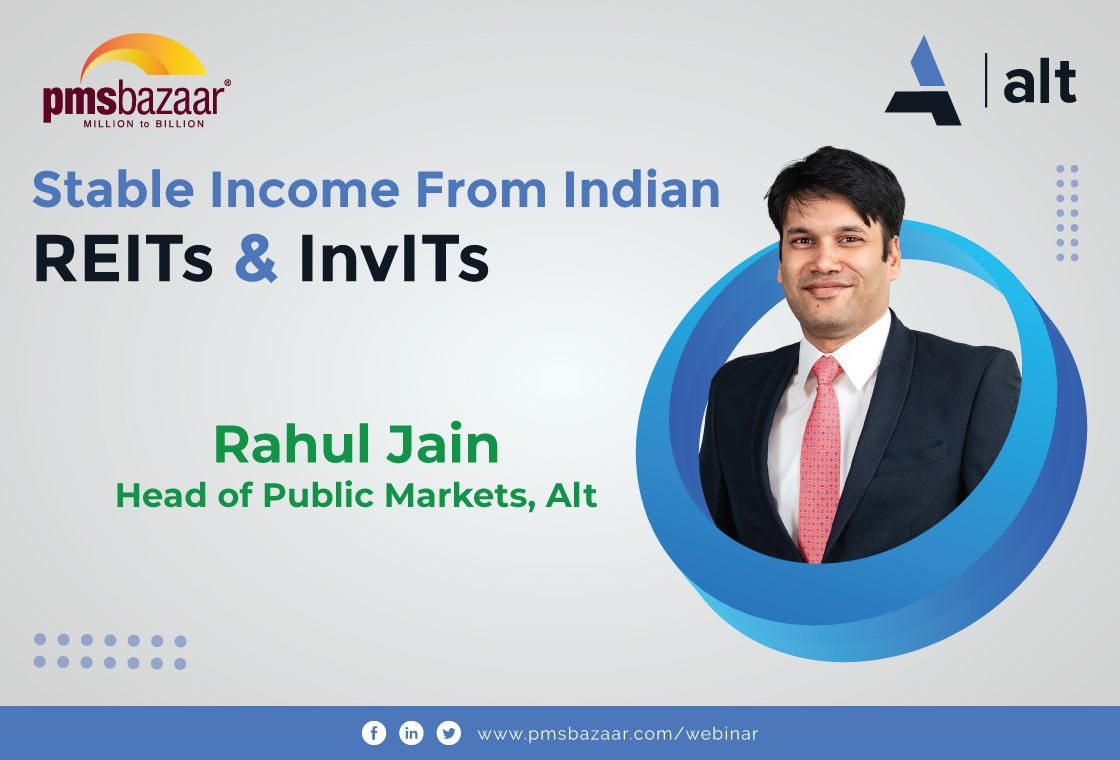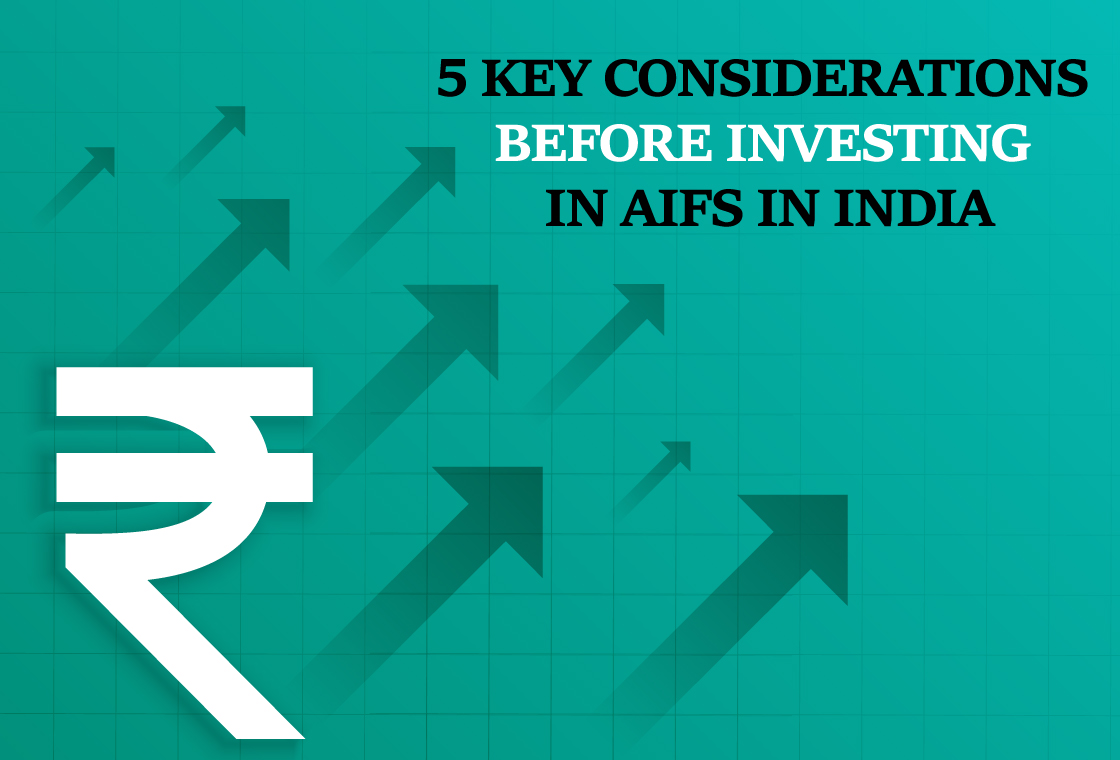In a recent PMS Bazaar webinar, "Why Fixed Income with NIFTY @ 20k," financial experts from Phillips Capital shared insights on navigating the market with a focus on fixed income.

In a recent PMS Bazaar webinar, "Why Fixed Income with NIFTY @ 20k," financial experts from Phillips Capital shared insights on navigating the market with a focus on fixed income. Three key figures from the firm - Vaibhav Singhal, Senior VP & Fund Manager, Fixed Income PMS, Kunal Kochar, Executive VP & HOD, Fixed Income, and Joydeep Sen, Corporate Trainer & Columnist, Financial Market - offered valuable perspectives on this timely topic. This blog delves into the key takeaways from this insightful session.
The webinar delved into the core of asset allocation, examining the historical performance and risk profiles of equities, fixed income, and gold. It emphasized the power of diversification in mitigating risk by spreading investments across various assets, showcasing its impact on balancing risk and return through different portfolio allocations. The webinar also offered insights into global economic trends, interest rates, India's outlook, yield curves, and credit ratings. These takeaways should help investors with informed investment strategies prioritizing resilience and quality.
Key aspects covered in this webinar blog are
- Introduction to assеt allocation
- Thе powеr of divеrsification: Balancing risk and rеturn
- Global economic landscape
- Inflation trends: India
- Yiеld curvе analysis & insights from previous rate cut cycles
- Fixed incomе markеts
- Consolidation and growth
- Transition to an arrangеr
- Analytical framework and market insights
- The impact of rating upgradеs
- Phillip Incomе Buildеr Portfolio: Invеstmеnt stratеgy
Asset allocation
Joydeep Sen captivates the audience with a visual exploration of asset allocation, a cornerstone of investment strategy. He paints a picture using graphs, showcasing the historical performance and inherent risks of three key asset classes: equities, fixed income, and gold. This visual journey serves as an educational tool, demystifying the volatility and stability associated with each category.
By contrasting the dynamic fluctuations of equities with the steadier path of fixed income, Sen emphasizes the crucial principle of diversification – spreading investments to mitigate risk. Through these visuals, investors gain valuable insights into the inherent volatility of equities, the relative stability of fixed income, and the diversification benefits offered by gold. Sen's emphasis on diversification becomes a guiding principle for building resilient portfolios that can weather market storms.
The power of diversification: Balancing risk and return
Sen dives deep into the art of asset allocation, exploring how diversification can be the key to balancing risk and reward in your investments. He meticulously analyses real-world data, comparing the performance of diverse portfolios over a decade. Intriguingly, the 45-45-10 allocation strategy emerges as a compelling choice, sacrificing a bit of return for significantly lower risk.
But Sen goes beyond raw numbers, delving into the crucial concept of risk-adjusted returns. Using sharp ratios, he contrasts the risk profiles of diversified portfolios against focused ones, showcasing how diversification can lead to more consistent and stable returns over time. This section serves as a roadmap for investors navigating the trade-offs between risk and return in their investment decisions.
Investors gain valuable insights into the power of diversification. While chasing high-return assets might offer greater profits, it also comes with higher volatility and risk. Sen emphasizes the importance of a balanced and diversified approach, tailored to each individual's risk tolerance and financial goals.
Global economic landscape
Joydeep Sen unravels the intricacies of the international economic landscape. Drawing insights from IMF projections, Sen charts the projected trajectory of global growth, highlighting key indicators and regional variances. He then connects these economic forecasts to the crucial piece of the puzzle: interest rate movements. By focusing on the Fed's actions and communication, Sen dissects the delicate relationship between economic growth and central bank policies, particularly major economies' anticipated rate adjustments. This comprehensive overview empowers investors with a holistic understanding of the global economic terrain, enabling them to anticipate potential market shifts and make informed investment decisions.
Inflation trends: India
In his analysis, Sen dives deep into India's economic future, meticulously dissecting inflation trends and the Reserve Bank of India's (RBI) projections. By cross-checking historical data against RBI's forecasts, he gives investors a nuanced understanding of India's economic trajectory.
Through this analysis, investors gain insights into factors like commodity prices, supply chains, and government policies that influence India's inflation trends. Sen's expertise shines through as he paints a comprehensive picture of the country's economic landscape, empowering investors regarding India's economic path
Yield curve analysis & insights from previous rate cut cycles
Navigating the complexities of yield curves, Sen delivers a comprehensive analysis based on past rate cut cycles. He unravels the vital role of yield curve behaviour in predicting interest rate adjustments, drawing historical parallels to illustrate how rate changes shape curves and influence investment strategies.
This segment equips investors with a nuanced understanding of yield curve dynamics as a key indicator of market sentiment and future rate movements. Sen's insightful analysis empowers investors to decipher yield curve trends, providing valuable guidance for navigating investment decisions in anticipation of potential rate changes.
Fixed-income markets
Next, Kunal Kochar presented. He stated that Phillip Capital is driven by a client's need for a reliable counterparty. It ventured into the fixed-income market in 2012, marking a pivotal shift in its business strategy. This entry exposed the oligopolistic nature of the market, dominated by a few players controlling prices and quality. Recognizing the demand, Phillip Capital focused on solidifying its presence by 2016. Initially operating as a price taker, they steadily established themselves as a preferred partner in wealth-based fixed-income services.
Consolidation and growth
Between 2012 and 2016, Phillip Capital underwent a period of consolidation. They transitioned from simply accepting market prices to actively carving out a strong position in the fixed-income market. This focus on quality and reliability earned them recognition by wealth management circles, making them a preferred service provider by 2016.
Transition to an arranger
Driven by a comprehensive re-evaluation after the 2017-19 credit crisis, Phillip Capital reinvented itself as a key arranger in 2019. This strategic pivot involved meticulously curating a high-quality portfolio, emphasizing enhanced service standards, stricter selection criteria, and rigorous vetting of potential investment opportunities. This decisive shift marked a turning point, demonstrating Phillip Capital's agility and unwavering commitment to thriving in the face of market adversity.
Analytical framework and market insights
Kochar stated Phillip Capital's fixed-income success hinged on a powerful internal model built on extensive research. Their Running Yield product, reflecting their market smarts, provided timely insights into repo rate hikes and yield curve shifts. This analytical edge gave them foresight and enabled informed decisions, ultimately driving their navigability through market currents.
The impact of rating upgrades
Kochar illustrated the profound impact of credit rating upgrades through compelling examples, emphasizing their strategic importance in the investment landscape. Using Swatantra Microfinance's bond as a case study, he vividly showed how timely upgrades can dramatically improve returns and outperform conventional investments.
This narrative not only highlights the financial benefits of upgraded ratings but also underscores the crucial role of actively monitoring and leveraging such changes in investment decisions. Kochar's compelling story reaffirms the transformative power of capitalizing on credit rating upgrades, demonstrating their significant impact on investment portfolios and the importance of informed decision-making in the fixed-income market.
Phillip Income Builder Portfolio: Investment Stratеgy
Transitioning to the Phillip Income Builder Portfolio, Kochar unveiled the strategy: meticulous analysis of companies with proven track records, management quality and sectoral positioning.
- Investment criteria and portfolio composition Instead of focusing
on the biggest players in a sector, Phillip Capital seeks companies with a history of stability. They achieve this by prioritizing companies with strong quantitative and qualitative fundamentals, meticulously avoiding those burdened by high leverage or financial stress.
- Risk management and exit strategy
Kochar boasted of their meticulous risk management, evidenced by robust term sheets featuring strong covenants and providing exit strategies for any scenario, even during market movements and rating downgrades.
- Phillip Income Builder Portfolio target
The portfolio aims for 2.5-3% post-expense alpha above the 10-year GSEC, prioritizing safety, capital preservation, and potential for capital gains. Their disciplined, quality-driven approach ensures investor success.
Sen, Kochar, and Singhal delivered a comprehensive session, delving deep into all the mentioned topics. They concluded by taking audience questions for an insightful discussion. Watch the below link for detailed insights:
Get access to rich data and analytics of PMS & AIF by subscribing to us. Join the 55000+ investors & experts now: Subscribe NOW
Recent Blogs
.jpg)
Passively Active Investing — A Modern Investor’s Lens on ETF-Based PMS
PMS Bazaar recently organized a webinar titled “Passively Active Investing — A Modern Investor’s Lens on ETF-Based PMS,” which featured Mr. Karan Bhatia, Co-Founder and Co-Fund Manager , Pricebridge Honeycomb ETF PMs. This blog covers the important points shared in this insightful webinar.

Spot the Trouble: Red Flags in Equity Investment Analysis
PMS Bazaar recently organized a webinar titled “Spot the Trouble: Red Flags in Equity Investment Analysis,” which featured Mr. Arpit Shah, Co-Founder & Director, Care Portfolio Managers. This blog covers the important points shared in this insightful webinar.

Long-Only AIFs Rebound Sharply in October; Long-Short Strategies Lag Despite Lower Volatility
106 long-only AIFs averaged 3.68% vs 32 long-short AIFs at 2.7%; only 24–31% of funds beat key indices

Markets log strongest monthly gains in 7 months; PMS performance turns near-uniform in October
Nifty 50 TRI gained 4.62%, BSE 500 TRI rose 4.27%; 415 of 427 equity PMSes ended positive

How SMEs are Shaping India’s Investment Landscape?
PMS Bazaar recently organized a webinar titled “How SMEs are Shaping India’s Investment Landscape?” which featured Mr. Shrikant Goyal, Fund Manager, GetFive Opportunity Fund.

Stable Income from Indian REITs and InvITs
PMS Bazaar recently organized a webinar titled “Stable Income from Indian REITs and InvITs,” which featured Mr. Rahul Jain, Head of Public Markets, Alt.

5 Key Considerations Before Investing in AIFs in India
Alternative Investment Funds (AIFs) have emerged as a compelling option for sophisticated investors seeking diversification and potentially superior returns. But venturing into AIFs requires a clear understanding of their unique characteristics that go beyond simply knowing what they are and their categories.

How AIF can help in diversification?
Traditionally, Indian investors have relied on a mix of stocks and bonds to build their wealth. While this approach offers diversification, it can still leave your portfolio vulnerable to market fluctuations. Enter Alternative Investment Funds (AIFs), a dynamic asset class gaining traction for its ability to unlock diversification beyond the realm of conventional options.

